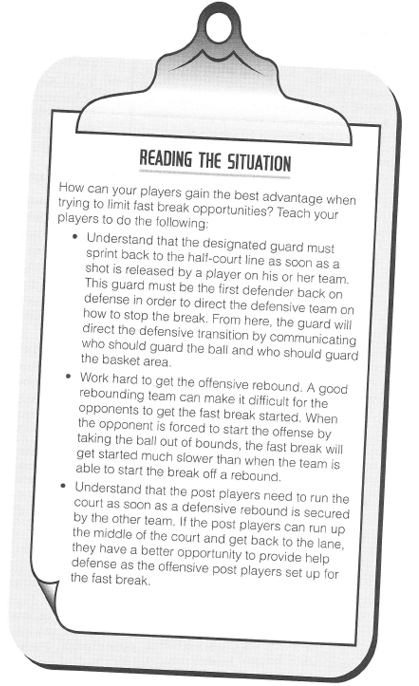|
Limiting Fast Break Opportunities by American Sport Education Program
When playing defense, limiting fast break opportunities for the offense can have a major impact on the game successful fast breaks can lead to quick and easy shots. The defensive transition against the fast break should be organized in such a way that all the defenders know what to do to stop the break. Getting back on defense and successfully limiting the offense's opportunities for a fast break require the defenders to sprint back and effectively cover the offensive players running the court.
ACQUIRING THE APPROPRIATE KNOWLEDGE Rules
Strengths and Weaknesses of Opponents
|
|
|







